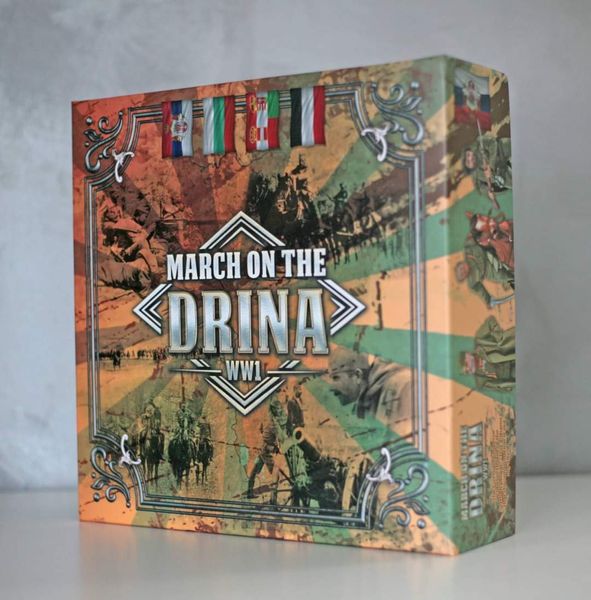March on the Drina (2019) Board Game
March on the Drina is a board game that focuses on the events of World War I, specifically the Serbian army’s retreat through Albania in in 2019. It highlights the challenges faced by the Serbian soldiers as they try to survive in harsh conditions and evade enemy forces.
Game Components of March on the Drina
How To Setup March on the Drina
To set up the game, each player selects a power to control (Serbia, Germany, Austro-Hungary, or Bulgaria). The game uses a “Fog of War” mechanic where players place their units on a mini map without knowledge of the opponent’s placements. After all units are placed, the main game board is populated according to these secret deployments. The calendar is set to the first period, and each player starts with their initial resources and units.
Gameplay Mechanics and Game Objective
Player Experience
**March on the Drina** is described as an approachable war game, more complex than Risk but not overly complicated. The game is designed to be educational, teaching players about the Serbian campaigns during World War I. The simplicity of the turn structure and the use of calendar cards to track historical events make it easy to learn and play. However, the luck cards can introduce significant randomness, making battles somewhat unpredictable.
Pros
Cons
Personal Thoughts on March on the Drina
**March on the Drina** is an excellent choice for those looking to step into the world of war games or for anyone interested in World War I history. It is particularly suited for new players due to its simple and easy-to-learn mechanics. However, experienced wargame enthusiasts might find it too light and random due to the luck cards. The game’s educational aspect and unique historical focus make it a valuable addition to any board game collection, especially for those keen on historical themes.
We are supported by our audience. When you purchase through links on our site, we may earn an affiliate commission, at no extra cost for you. Learn more.

